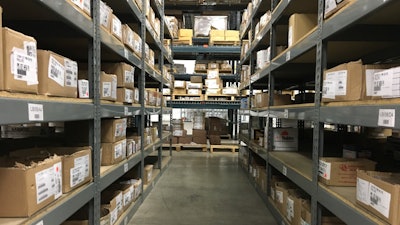
A distributor’s most expensive asset is their inventory. To manage it wisely and avoid overstocking while reliably serving customers requires sophisticated inventory tracking. While implementing a cycle counting program is an improvement over annual physical inventory counts, there are ways to enhance cycle counting to understand your item usage at a granular level, optimizing inventory levels and reducing costs.
Why cycle counting works
Cycle counting is an inventory management process wherein smaller batches of stock are methodically counted on a regular basis. While it takes discipline and a good system to implement cycle counting, it has many advantages over a physical inventory.
Cycle counting is a continuous process that can be conducted during a typical business day. A physical inventory is usually done at a company’s fiscal year-end and requires shutting down any inventory activity – including receiving and shipping – to ensure an accurate count. This is an expensive proposition in terms of labor and lost revenue.
Cycle counting does not require significant resources and is more accurate. Physical inventory is often done manually, which entails a significant amount of time, pulls staff from revenue-generating tasks and is prone to errors.
Errors, such as misplaced or missing inventory, are found much more quickly than the typical year-end inventory where they can go undiscovered for months.
It’s not a one-size-fits-all process. There are ways to segment important inventory from slower-moving or less important items.
Go beyond traditional cycle counting
While technology has enabled more efficient and accurate approaches to inventory tracking, a data-driven cycle-counting process can be a game-changer for your bottom line. For distributors, there are ways to go beyond traditional cycle counting to amplify the tracking of your biggest capital asset.
1. Expand the Classifications
Most distributors place inventory into categories, which are then used to determine how often to conduct cycle counting. The most often-used method, “ABC classification,” consigns items into the following categories:
- A – High-value, high-turnover, must-have-in-stock items
- B – Fairly important items that don’t turn over as often as A items
- C – Low turnover items
To refine your inventory tracking, don’t limit classifications to ABC categories. Invest in technology that allows you to define multiple inventory categories and set up individual counting cycles for each.
For example, if you’re a supplier of medical equipment, high-value items like defibrillators would be considered “A” items. However, high-turnover items like gloves and PPE could also be classified as “A” items, but would need to be counted at a much higher frequency to ensure adequate stocking levels.
2. Segment inventory for targeted tracking
Inventory needs to be segmented to be cycle counted effectively and there are three ways to divide inventory into categories:
Arbitrary – a preference based on a company’s needs. For example, on a manufacturer’s production line, an inexpensive fastener may get classified as an A item because it’s an item vital to the assembly and ensures the production line never goes down.
Extended Cost – based on the unit cost for an item multiplied by the total number of units on hand currently.
Inventory Turns – based on the number of times an inventory item is sold or used in a strictly defined time period.
Once you’ve determined how to segment your inventory, good inventory management technology will continually evaluate item usage and automatically reassign the items to the correct segment based on pre-defined classifications. The difference between automatic and fixed segmentation is as follows:
Automatic Segmentation – determined by actual usage of the material. For example, if you set up items valued at $1,000+ to be A items and a $950 item has a price increase that causes it to exceed $1,000, the item will automatically be included in the A classification and will be counted more often. Conversely, if the value of an item falls from $1,100 to $890, it will automatically move from an A to a B classification.
Fixed Segmentation – classification does not change unless done manually. However, notifications should be generated when the item runs low to upgrade the classification if required.
Investing in technology that provides automatic and fixed segmentation permits distributors to automate the process as much as possible, while allowing for exceptions.
3. Utilize technology for real-time usage tracking
For distributors that provide the value-added service of vendor-managed or customer-managed inventory for their customers’ stockrooms or service trucks, the use of technology such as scanners and sensor bins allows them to track usage in real-time.
Using an app that collects the usage data from the stockroom as items are consumed, distributors know exactly what and how much is being used and what to replenish.
Sensor Bins automate the tracking and replenishment process and provide the most accurate and current information. With IoT weight sensors under item bins that are integrated with an inventory management software, this technology converts bin weights to quantity to allow complete inventory counts multiple times a day with zero human intervention and can also trigger replenishment orders to the distributor’s ERP software.
By investing in automated replenishment software for point-of-use applications such as service trucks or stockrooms, distributors can conduct daily cycle counting without traveling to the customer site, allowing them to redirect sales reps to revenue-generating tasks.
The Final Word
 Rockwell
Rockwell
Rock Rockwell is CEO of eTurns, a point of use inventory management app that automates inventory replenishment in stockroom and service trucks using phones, RFID and TrackStock SensorBins™. Contact Rockwell at [email protected].






















